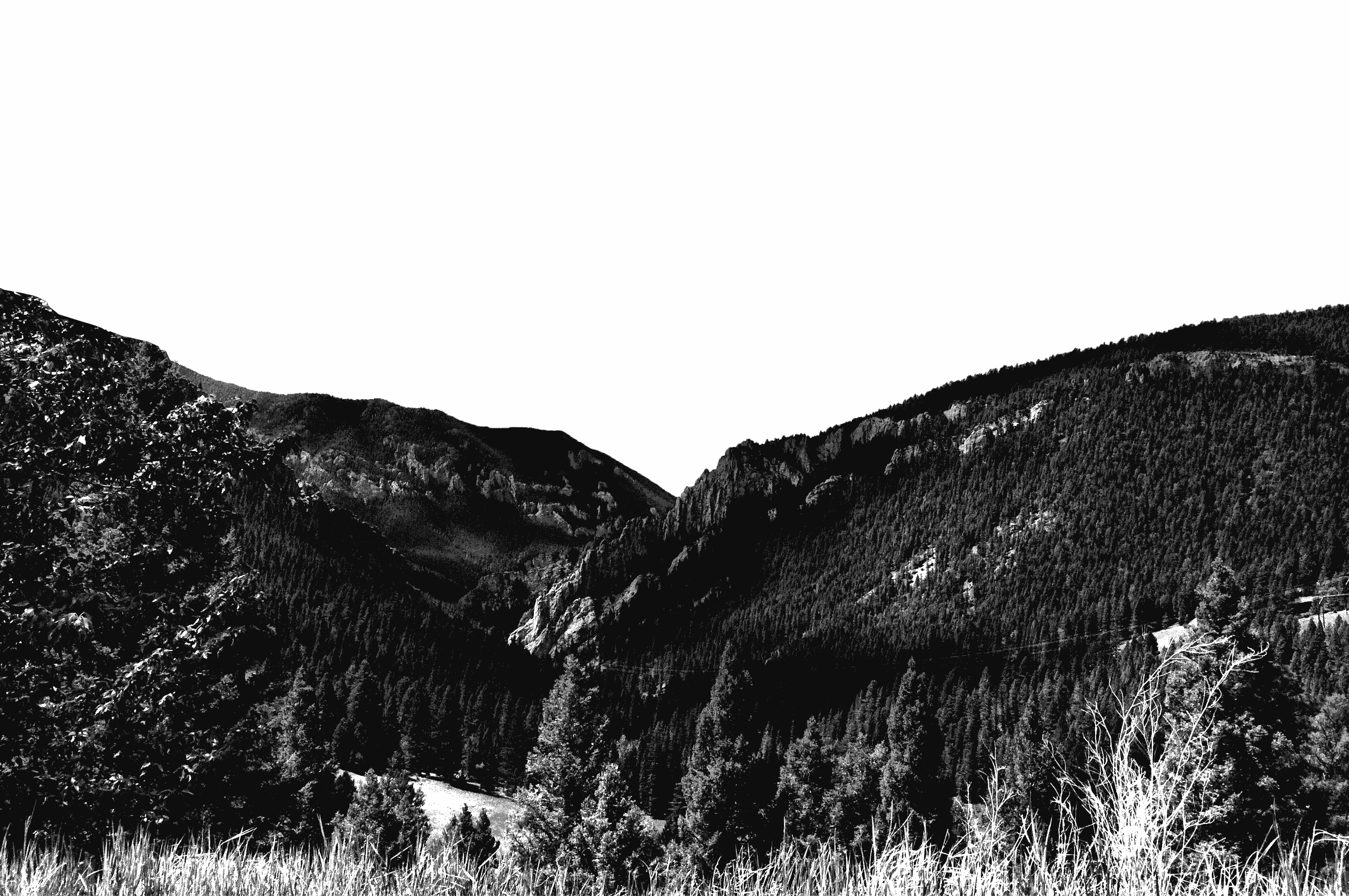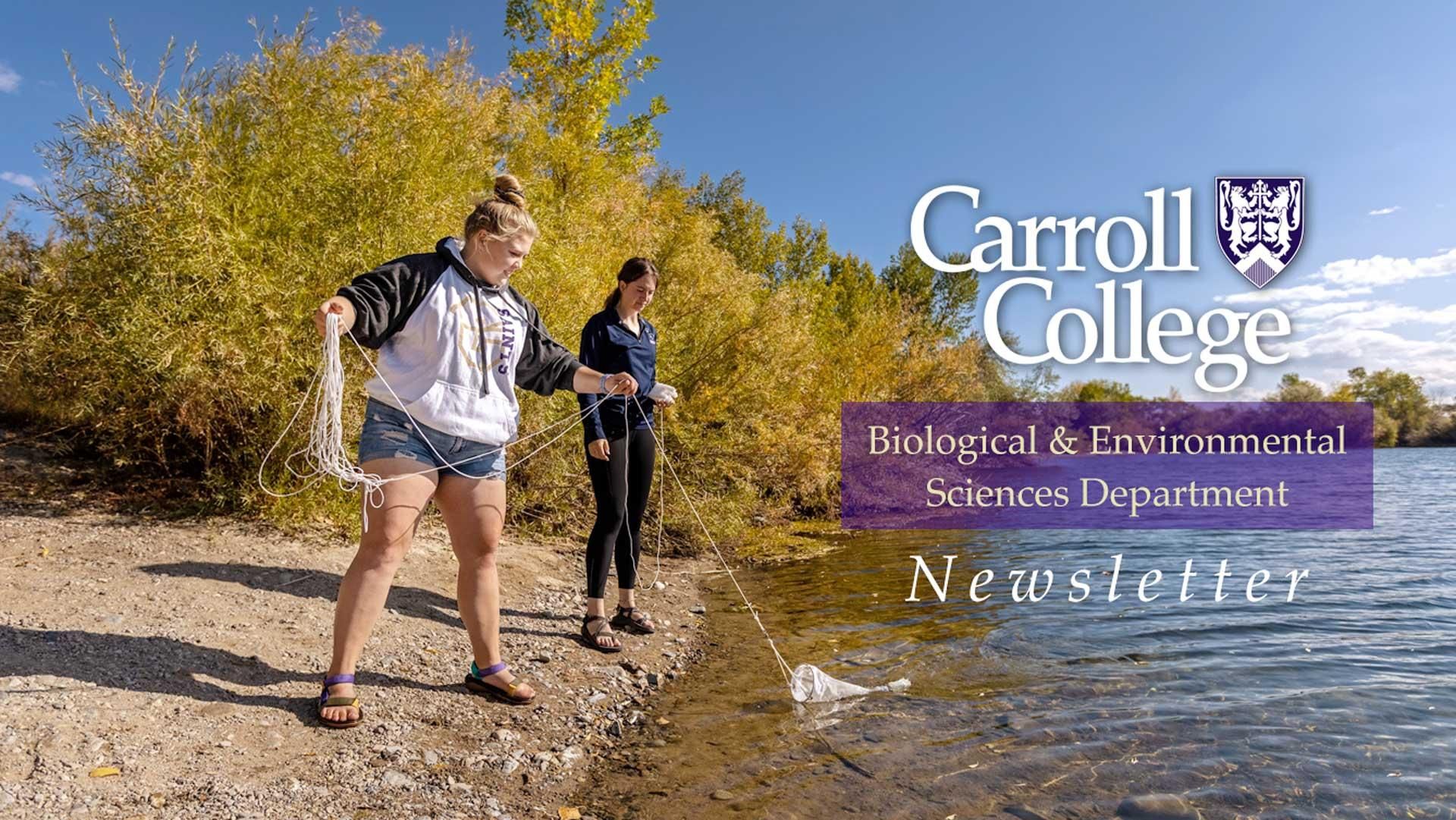Dear Carroll College Biology and Environmental Science Alumni and Supporters:
In this latest edition, we're pleased to share some news and highlights happening in our Biological and Environmental Sciences Department. From research initiatives to new “lab partners,” to upcoming events, we are happy to keep you connected and informed about the latest developments that are making an impact in our department.
Summer Research – Beck Lab
Last summer, biology major June Lepage conducted research with Assistant Professor Ashley Beck. She shares the following about her experience:
"Our research was focused on how urbanization affects the health of wildlife populations such as deer mice. In collaboration with the University of Portland and Gonzaga University, we collected blood, hair, and fecal samples from deer mice in various urban and rural areas surrounding Spokane, WA. Our Carroll College lab focused on analyzing the fecal samples to generate information about the gut microbiota of the mice. This project is ongoing and we have two more summers of data collection to look forward to!
"Working with Professor Beck, fellow research student Elliot, and all of our non-Carroll collaborators taught me so much about the scientific process. There are so many questions that need to be asked, but there are even more ways to find the answers! No project has a linear path and there is so much beauty conquering unexpected challenges.
"This research also taught me so much about myself as a curious person interested in science. Even if someone feels like they're set in their academic or life trajectory, they should consider involving themselves in research. It allows you to dive into a hyper-specific piece of the world and learn so much about something really interesting. Talk to your professors about their interests or set up an independent study today!"
~ June LePage, Biology, Class of 2025

You can help provide these impactful research opportunities for Carroll College students just like June. To learn more about supporting student research opportunities and student scholarships, or creating an endowed faculty professorship, please contact the Office of Institutional Advancement at advancement@carroll.edu or 406-447-4445.
Environmental Science Research
Senior environmental science student Alison Ross presented her research interpreting a sonar bathymetric study of Lake Helena at the 32nd annual Murdock College Science Research Conference (MCSR) held this past November in Vancouver, Washington. The MCSR conference highlights the collaborative faculty-mentored undergraduate student research that occurs at small colleges in the west.
Alison was joined by Dr. Patricia Heiser, associate professor of earth science and director of the Environmental Science program as well as several students and faculty from chemistry and biochemistry and molecular biology.
Utilizing historical topographical maps from 1899 and identifying various underwater features, Alison has been focused on deciphering and charting these elements. The goal of this research is to identify potential sites for coring through ancient wetlands and ponds. This coring will allow the ES team to extract records from the Holocene era to study past hydrology and climate conditions.
This study, “Reconstructing Holocene Climate and Landscape Change at the Mountain-Prairie Ecotone, Central Montana,” is being funded through a three-year grant from M.J. Murdock Charitable Trust’s Murdock College Research Program for Natural Sciences–Physical Sciences.
“My favorite thing about going to Murdock was being able to connect with environmental faculty from different schools. Environmental is a small program at Carroll, so being able to gain new perspectives and have new people show interest in my project was a great experience. I would strongly recommend that other students present their projects there.”
~ Alison Ross, Class of 2024, Environmental Science, Haslett, MI

Alison intends to keep working on the project throughout the summer before she starts her full-time position at Spicer Group Consulting in Michigan, where she has already completed two years of internships. Other students who will be contributing to the project this summer include:
- Arianah Sargent, a senior biology major who also added environmental science to her portfolio, will be reconstructing fire history through charcoal analysis and studying wetland/lake environments using fossil diatoms. Recently, she was employed at Energy Labs and has been interviewing for full-time positions at the Department of Environmental Quality.
- Maggie Todd, a junior, is employing plant macrofossils found in cores to reconstruct past wetlands and aquatic plant communities. She is in her second year as an intern at the Department of Environmental Quality, focusing on water quality.
- Nate Gong, a junior, is studying diatoms to investigate human impacts and other changes in Lake Helena since its damming in 1911. Additionally, he is in his second year as an intern at the Department of Environmental Quality, working on water standards.

Dr. Patricia Heiser is looking forward to spending a month in Iowa this upcoming summer at what she enthusiastically calls "Diatom Camp." This unique educational opportunity will immerse her in the study of diatoms, which are single-celled algae known for their intricate glass (silica) shells. These organisms are well preserved in lake sediments and serve as excellent indicators of current and historical conditions in lakes and wetlands. Now in its 61st year at the University of Iowa Lakeside Lab, the course officially titled the Ecology and Systematics of Diatoms is recognized as the premier training program in diatom studies for scientists specializing in water quality and paleoecology.
During her time at the camp, Dr. Heiser will be mastering the techniques for sampling, processing, identifying, and analyzing diatoms. She will be bringing several Lake Helena cores to the lab for analysis and to learn Montana species. She looks forward to bringing back valuable knowledge and skills so that her current research students noted above, along with future students, can leverage this powerful tool in their hydroclimate research and other environmental studies related to hydrology. More about the course can be found here.
Amicable Arachnids

Did you see the feature about our newest additions to the Biology Department in Dr. Cech's Friday newsletter? If not, we are re-sharing the story below.
Carroll’s Biology Department has become the unlikely caretakers of three unusual species not endemic to Montana – tarantulas from South America and Borneo!
Backstory: This past fall, David Yake ‘17, currently a Wildlife Inspector for the U.S. Fish & Wildlife Service in Seattle, contacted professors in our Biology Department to see if they were interested in receiving tarantulas to use for educational purposes. The tarantulas had been confiscated by the USFWS because they had been imported in violation of the Lacey Act and did not comply with documentation requirements for the Endangered Species Act. The animals had been imported from a 3rd party country, but the importer was unable to provide documentation that they had ever been legally exported from their endemic range.The spiders sent to Carroll are native to Colombia, Indonesia, Malaysia and/or Brunei. These countries all require export documentation for animals leaving their borders.
Once confiscated, the animals could only be used for research or educational purposes – and this is where Carroll came into the picture. Yake, a Carroll grad in Anthrozoology, reached out to Professor Sheafor and our education on tarantulas began when Carroll received the spiders on November 1, 2023. They are spiderlings (or "slings" as the in crowd refers to them) so are very young. All were around an inch in length diagonally from front to back legs when we received them. They are growing fast, but will not reach adult status for two or three years. One of the species we have could get as big as eight inches diagonally. We don’t envision students working with them for at least another year to allow them to mature more. Female tarantulas can live 20-25 years, so we have plenty of time to study them in the future.
“The animals are new enough that we do not have any research plans for them yet. Once they get a bit bigger and settle in, they might be used for student research projects in animal physiology. For now, they are for the students to observe and enjoy while gaining an understanding of biodiversity and animal evolution.”
~ Brandon Sheafor, PhD, Professor, Biology
Here is a link to the Powerpoint presentation on tarantulas which is running alongside the tarantula aquariums in their exhibit case in Simperman Hall.

Save the Date - A Celebration of Undergraduate Research
You are invited to our Celebration of Undergraduate Research on Wednesday May 8, 2024, from 4-6 pm on the Carroll College campus in the Fortin Science Center Scola. This event will feature student research talks, student research posters, light hors d'oeuvres, and drinks provided by the Knights of Columbus.
Please join the faculty and our amazing students as we celebrate, promote, and recognize the impact of undergraduate research.

Saints Giving Day | March 21-22, Noon to Noon
You can support the Department of Biological and Environmental Sciences as they raise funds to support undergraduate research during our third annual Saints Giving Day.
This social and digital fundraising campaign will last for 24 hours beginning at noon on Thursday, March 21, and run through noon Friday, March 22.
Biological and Environmental Sciences Undergraduate Research Travel Fund has been selected as one of the causes in this year’s Carroll College Saints Giving Day.
 The Biological and Environmental Sciences Undergraduate Research Travel Fund supports travel to conferences as well as research projects related to undergraduate student research. This cause allows us to support student engagement in the high-impact experience of independent student research. Such experiences promote the development of creativity, critical thinking, and problem-solving. Your donations will give students the chance to engage with cutting-edge research and to experience this research presented by others in the field.
The Biological and Environmental Sciences Undergraduate Research Travel Fund supports travel to conferences as well as research projects related to undergraduate student research. This cause allows us to support student engagement in the high-impact experience of independent student research. Such experiences promote the development of creativity, critical thinking, and problem-solving. Your donations will give students the chance to engage with cutting-edge research and to experience this research presented by others in the field.
Keeping Updated on News from Us
We are extremely grateful for the outreach and engagement we have seen from our alumni and supporters. Many of the transformative experiences we provide our students are made possible through your generosity. We also appreciate your feedback, insights, and ideas, which are important for the future success of our programs. Please feel free to reach out to any of us in Biology and Environmental Science via email.
Sincerely,
The Carroll College Biological and Environmental Sciences Faculty

